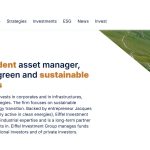EU Climate Progress Nears 2030 Targets, but Gaps Remain in Agriculture and Transport

- Near-Target Emissions Cuts: EU is on track to cut net GHG emissions by 54% by 2030—just 1% shy of its legally binding 55% target.
- Industrial and Energy Sector Gains: Strong progress in renewables and industrial decarbonisation are driving momentum, aided by initiatives like the Clean Industrial Deal.
- Lagging Sectors Pose Risks: Agriculture and transport remain major gaps, with political resistance and natural disasters undermining land-based carbon sinks.
The European Union is closing in on its 2030 climate and energy targets, according to the European Commission’s latest assessment of Member States’ National Energy and Climate Plans (NECPs). Improved national commitments put the bloc within striking distance of its 55% net greenhouse gas (GHG) emissions reduction goal—currently projected at 54% if all measures are fully implemented.
“Emissions are down 37% since 1990, while the economy has grown nearly 70%, proving climate action and growth go hand in hand,” said EU Climate Commissioner Wopke Hoekstra. “Now we must build on this momentum.”

Renewable energy deployment is also on the rise, with renewables covering 24% of EU energy consumption in 2023. The EU is now collectively aligned with its goal to source at least 42.5% of energy from renewables by 2030.
Strategic policies such as the Clean Industrial Deal and the Affordable Energy Action Plan are reinforcing NECPs by mobilising investments in clean technologies, strengthening energy security, and reducing reliance on imported fossil fuels.
“The EU is staying the course on its climate commitments, investing with determination in the clean energy transition,” the Commission stated.
Despite this progress, major gaps persist—particularly in agriculture and transport. These sectors have not kept pace, and recent political backlash, especially from farmers, has led to the weakening of some environmental rules. The agricultural sector has largely remained exempt from stringent EU climate measures.
RELATED ARTICLE: 91% of EU Companies Report Climate-Positive Activities in KPMG’s Taxonomy Report
Additionally, the EU’s carbon sink—the natural capacity of ecosystems like forests and grasslands to absorb CO₂—is not expected to improve by 2030. Record-breaking wildfires have further eroded the environmental gains from land use.
“Europe is the world’s fastest-warming continent,” the Commission emphasized, pointing to increasingly frequent climate-related disasters like floods and wildfires.
Looking ahead, the Commission will continue working with Member States to close the remaining gaps and drive implementation. Belgium, Estonia, and Poland are still required to submit final NECPs. The Commission is also finalizing its review of Slovakia’s plan, submitted in April 2025.
The next strategic phase focuses on execution—channeling public and private investment to accelerate the clean energy transition and ensure predictability for industry stakeholders.
“This is about ensuring stability and directing capital where it will have the most transformative impact,” the Commission noted.
While the EU’s 2030 targets are within reach, sustained political will, sectoral alignment, and financial mobilization will determine whether Europe remains a global leader in climate action.
Follow ESG News on LinkedIn








